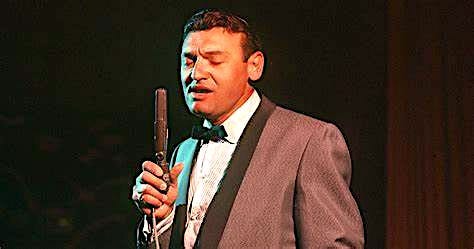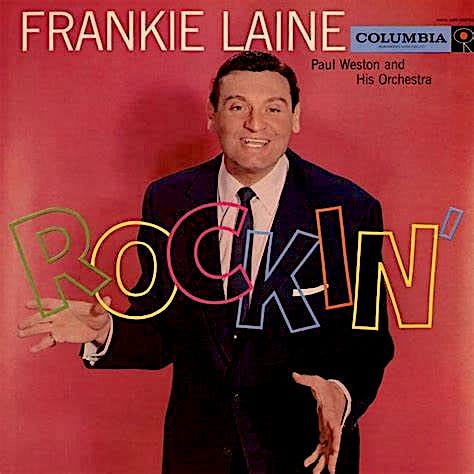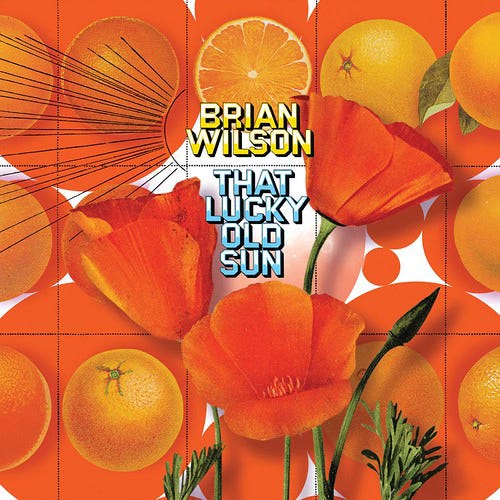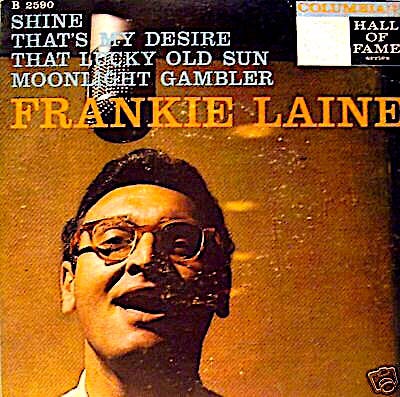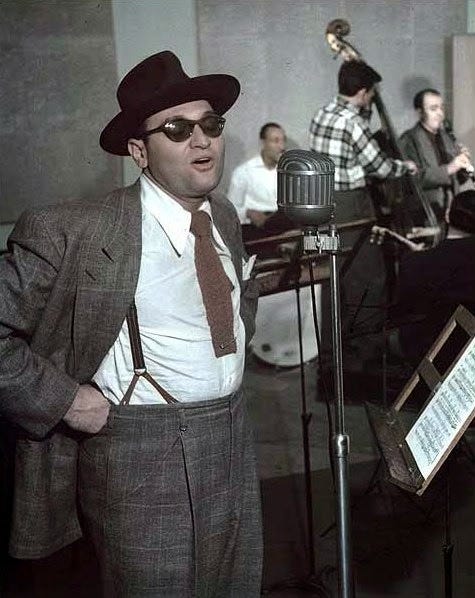Steel Tonsils, Size 12 Feet, & Frankie Laine
Birthday shout-out to the innovative American vocalist
Born 1913 in Chicago, Frankie Laine (birth name Francesco Paolo LoVecchio) was influenced by his Italian parents and their record collection of opera and blues, particularly Bessie Smith and Louis Armstrong—who Laine called “my idol.” His early career had many setbacks and he quit the music business at least six times. Then in 1946 he was “discovered” by Hoagy Carmichael, which led to Laine’s breakout hit “That’s My Desire” (now a jazz standard). Concurrently he discovered a niche singing in films.
Laine signed to Mercury Records, then switched to Columbia, and the hits (and royalty checks) rolled in. He was heralded as an innovator for his unique vocal technique and masculine tone. Like Bessie Smith, Laine’s voice projected and could fill a hall without a microphone. One critic described Laine as “a big lad with steel tonsils who belted out torch blues while stomping his size twelve feet...he owed nothing to Crosby or Sinatra...” In contrast to the smooth balladeer of the era, Laine would bend notes and sing around the chordal context of a note rather than to sing the note straight, and he stressed each rhythmic downbeat.
Like Johnnie Ray, Laine was first cast as an R&B/jazz singer and is now regarded as a forerunner of rock & roll. He was name-checked by The Beatles and was an obvious influence on Elvis Presley and Ray Charles—who admitted to mimicking Laine. As he branched out into folk, gospel, pop and, famously, Laine hit paydirt with his series of Cowboy/Western theme songs now imbedded in pop culture: “Gunfight at the OK Corral,” “Rawhide,” “3:10 to Yuma,” and many more.
His Campbell Soup “Manhandler” commercial hasn’t been on the air for decades, but people are still singing it.
In his long career he had more than 70 charted records, 21 gold records, and global sales of over 100 million records. He was still performing at age 93 when he passed away in 2007.
Laine’s 1949 cover of the folk-spiritual “That Lucky Old Sun” became his 5th gold record, perhaps because a lot of working people could relate to it.
The lyrics of the song contrast the toil and hardship of the subject’s life with the obliviousness of the natural world. Yet he sees a silver lining and God's deliverance behind it all. Inspired by “Ol’ Man River,” “Lucky Old Sun” was written in 1949 by big band musician Beasley Smith and prolific Tin Pan Alley lyricist Haven Gillespie—who also wrote "You Go To My Head" (another favorite of mine). “Lucky Old Sun” gained presence with me after hearing Brian Wilson's 2007 concept album based on this song.
In 2020 I added it to my set list for when I perform in assisted living homes.
My arrangement blends the definitive Laine recording with the soul of Louis Armstrong's cover (in 1949 both artists released "competing versions").
Meanwhile, HB Frankie, and thank you for giving us years of amazing songs
#luckyoldsun #GreatAmericanSongbook #OlManRiver #BeasleySmith #HavenGillespie #BrianWilson #LouisArmstrong #FrankieLaine #gospel #work #river #johnnyjblair #singeratlarge





